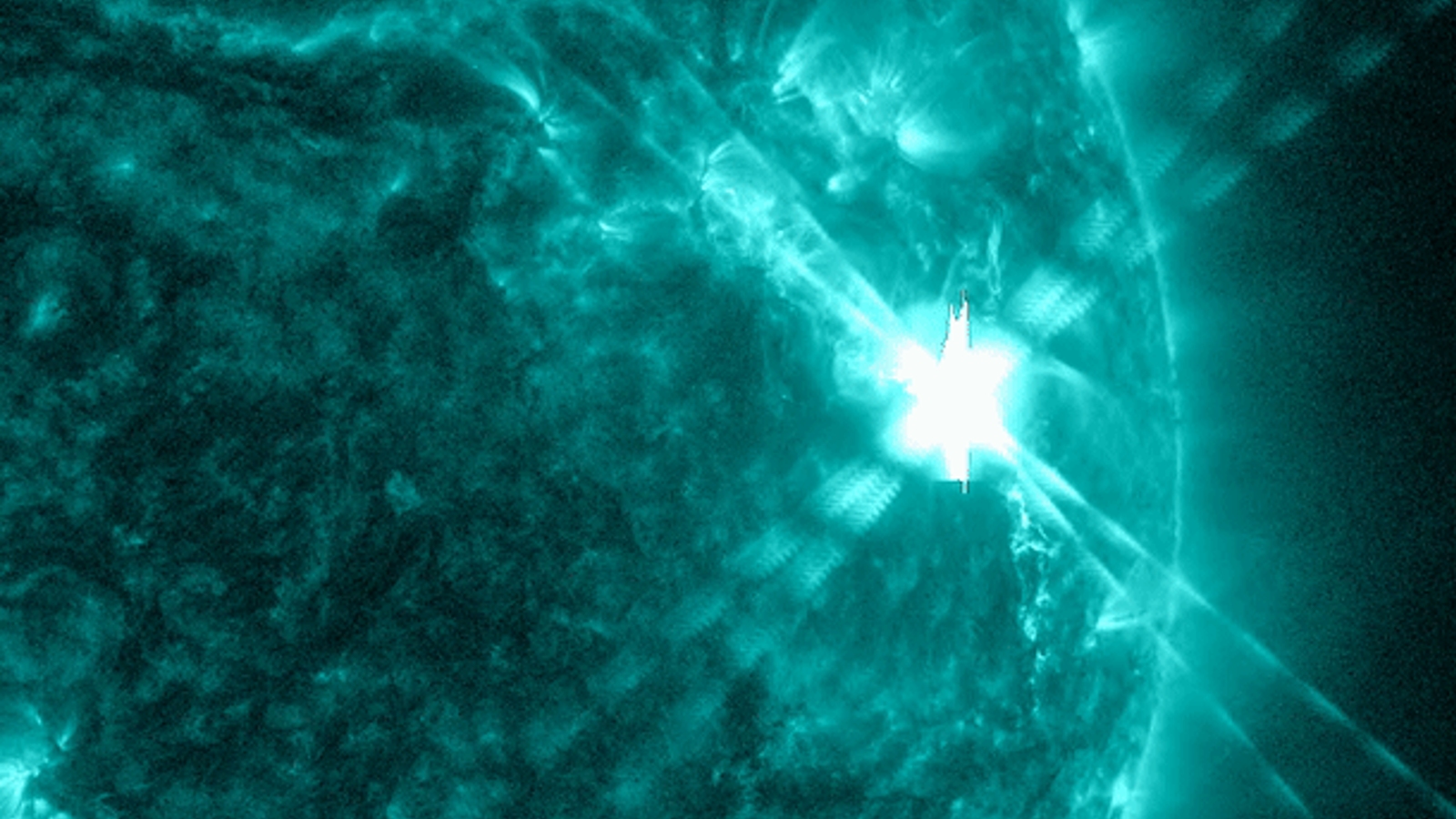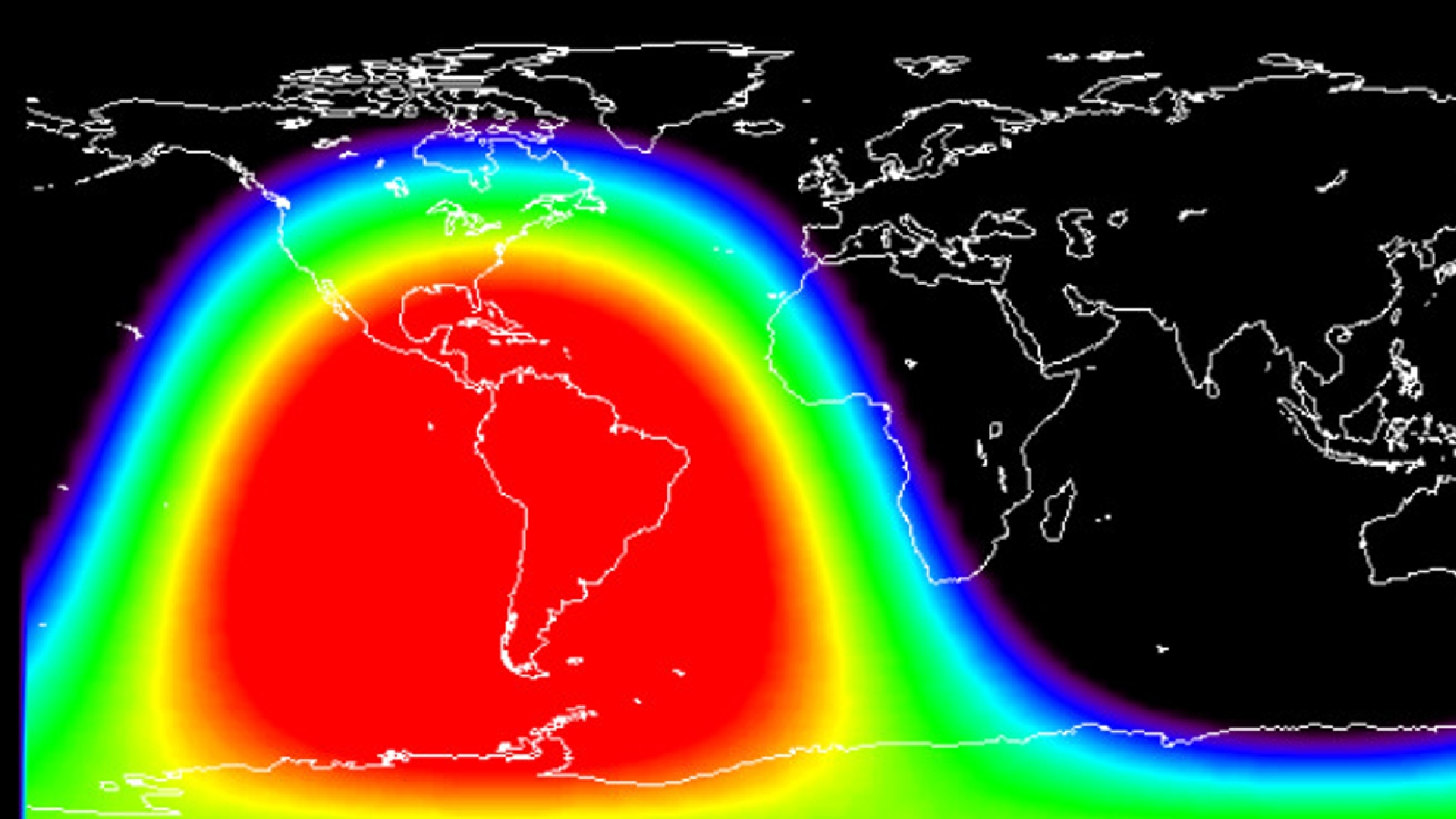Monster X-class flare is most powerful solar eruption since 2017, could trigger auroras and major geomagnetic storms
On Dec. 14, a 2.8 magnitude X-class flare exploded from the sun, triggering radio blackouts on Earth and unleashing a CME that could also hit our planet in the next few days. It is the most powerful solar flare in more than six years.
The most powerful solar flare for more than six years has just exploded from the sun, and Earth is in the firing line. The X-class outburst has already triggered widespread radio blackouts and launched a massive plasma plume that could hit us in the coming days.
The "amazing event" is another clear sign that the sun's explosive peak, the solar maximum, is right around the corner, experts say.
The X-class flare — the most powerful class of flare the sun can produce — exploded from sunspot AR3514 on Dec. 14 at 7.02 p.m. ET, according to Spaceweather.com. It had a magnitude of 2.8, which makes it the most powerful solar flare since an X8.2 magnitude flare erupted on Sept. 6, 2017, according to SpaceWeatherlive.com.
As the flare exploded from the sun, it unleashed a wave of solar radiation that quickly bashed into Earth and disrupted our planet's magnetic field, or magnetosphere. This enabled the radiation to temporarily ionize the top part of Earth's atmosphere, creating a massive radio blackout covering most of the Americas. The blackout lasted for around two hours and "is likely one of the largest solar radio events ever recorded," according to the National Oceanic and Atmospheric Administration's (NOAA) Space Weather Prediction Center (SWPC).
Solar flares can also launch clouds of magnetized plasma into space, known as coronal mass ejections (CMEs), which move more slowly than the initial radiation burst. At first, scientists were unsure if the latest flare launched a CME, but they now believe it did and that part of the CME could bash into Earth on Dec. 17 at a speed of around 4.7 million mph (7.6 million km/h). When it does, it could trigger a moderate to major (G2 or G3) geomagnetic storm, which could create vibrant auroral displays and interfere with satellites and some ground-based infrastructure, according to Spaceweather.com.
There is also a chance that the same sunspot could unleash another X-class flare in the coming days. The dark patch spat out a sizable M-class flare (the class below X-class) several hours before unleashing the X2.8 flare, and when sunspots start spitting out multiple eruptions like this, there are normally more to come, according to EarthSky.
Related: 10 solar storms that blew us away in 2022
Get the world’s most fascinating discoveries delivered straight to your inbox.
Solar flares become more frequent and powerful as the sun approaches solar maximum, which is the most active phase of the sun's roughly 11-year solar cycle.
There have now been 21 X-class flares since the current solar cycle began in 2019, 12 of which have come in 2023, according to SpaceWeatherLive.com. At least three of this year's X-class flares have bashed Earth with CMEs: The first flare came in early January; the second hit us in February; and the most recent erupted in July. In August, another X-class flare also triggered widespread radio blackouts, but did not launch a CME.
This year we have also experienced the most powerful geomagnetic storm in the last six years and seen sunspot numbers hit a 20-year high. Other rare solar phenomena to hit this year include cannibal CMEs, a gigantic hole in the solar surface and "canyon of fire" eruptions — all signs that the solar maximum is fast approaching.
Scientists initially predicted that the solar maximum would be weak compared with previous solar cycles, and would not arrive until 2025 at the earliest. However, SWPC scientists have since updated their predictions and now believe the solar maximum will be more active than the last one and arrive in early 2024.

Harry is a U.K.-based senior staff writer at Live Science. He studied marine biology at the University of Exeter before training to become a journalist. He covers a wide range of topics including space exploration, planetary science, space weather, climate change, animal behavior and paleontology. His recent work on the solar maximum won "best space submission" at the 2024 Aerospace Media Awards and was shortlisted in the "top scoop" category at the NCTJ Awards for Excellence in 2023. He also writes Live Science's weekly Earth from space series.




